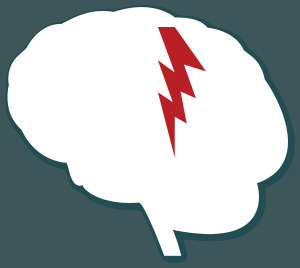Migraine or Stroke? New Stats.
Yes, sometimes migraine looks like stroke. But let’s lay some important groundwork.

Most strokes are ischemic stroke. When there is a blockage to an artery going to the brain (such as a blood clot), the brain won’t get the oxygen it needs. Very quickly, brain cells begin to die. It’s a medical emergency.
Stroke is one of the leading causes of death worldwide, as well as a major cause of disability.
Typical symptoms include slurred speech or trouble understanding what others are saying, numbness or paralysis (often on one side of the body, such as half of the face), vision problems, dizziness, and a sudden headache. More helpful information can be found at the Mayo Clinic article about stroke. Scroll down for tips on what to do if you suspect a stroke.
Yes, other conditions can “mimic” stroke – but be on the safe side. If you have good reason to suspect a stroke, get the person to emergency treatment immediately.
To further complicate matters, migraine patients may be at increased risk of stroke (see for example these estimates).
But although it’s important to check for stroke right away, doctors and patients need to be aware that other conditions may mimic stroke. A recent study from Hungary gives us some more information.
For example, peripheral vestibular dysfunction was found to be the most common stroke mimic. This means dizziness, which can also mean problems walking properly, and nausea. This alone accounted for almost a quarter of the stroke mimics.
Migraine was down the list, but it still accounted for almost 8% of the stroke mimics. So to put this in perspective, if it looks like someone is having a stroke, less than 2% of the time, it may be migraine.
But there’s a way we can further narrow things down. If the patient is young, female, and at low risk of stroke, there’s a much higher chance that the symptoms are not, in fact, from stroke.
Why does this matter? You still need to go to the emergency room, right?
Yes, but it matters because once you’ve ruled out stroke, you still need to find out what’s going on, and treat it. Migraine is one of the main alternate culprits, because it, of course, can cause headache, but also dizziness, vertigo, paralysis, speech problems, and vision problems. So it’s important to treat, because it is also one of the leading causes of disability.
Find ways to reduce your stroke risk, and be sure to take migraine seriously as well.
Read more about this study here: Ischemic stroke mimics: A comprehensive review
